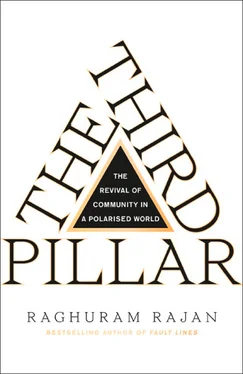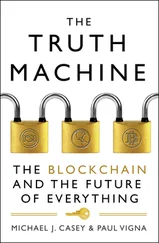The Stuarts got another chance. After the death of the parliamentary leader, Oliver Cromwell, the Stuarts were restored to the throne. However, what Talleyrand said of the Bourbons was true of the Stuarts too: ‘They had learned nothing and forgotten nothing.’ The Stuarts tried to weaken Parliament once again. Matters came to a head during the reign of James II, who was suspected of having Catholic sympathies. Catholicism was associated with an absolute despotic monarchy, as exemplified by Louis XIV. 29With the economy buoyant and customs revenues pouring in, James did not need Parliament to vote on new taxes to fund his small standing army. He increased Parliament’s sense of alarm by recruiting Catholic officers into the army, and expanding it. 30Parliament was further weakened because the king could dissolve it at his whim, and he did so repeatedly until he got one that was cooperative.
In his attempt to restore the dominance of the monarchy, as well as possibly Catholicism, James went too far and united the opposition. When James’s Catholic wife gave birth to a son who would be a Catholic successor to the throne, both the party of the landed interests, the Conservatives, and the party of the moneyed commercial interests, the Whigs, invited William of Orange and his wife Mary to take the throne of England, setting off what would be termed the Glorious Revolution of 1688.
The Declaration of Rights
James fled England. Given a second chance to restrain the monarchy with a shorter leash, Parliament was determined not to err again. An elected Convention, which later became the new Parliament, presented to William and Mary a Declaration of Rights, which listed the legal rights of the subjects that James had violated, and that the monarchy now was expected to uphold. The supremacy of Parliament over the king was established de jure, and the sovereign was now the ‘king in Parliament’, not the king alone. 31The monarch could no longer call or disband Parliament at whim, the monarchy’s independent sources of revenue were curtailed, and all taxes had to be approved by Parliament, which could monitor spending and veto it if necessary. Similarly, the monarch’s ability to override courts was substantially weakened, and judges were made independent by taking away the king’s power to remove them. They were liable to removal only through conviction or by vote of both Houses of Parliament.
By curtailing the arbitrary powers of the sovereign, Parliament essentially allowed the monarch to become more trustworthy. He could be permitted to acquire more capabilities without raising concerns that he would convert them into unfettered power over citizens. For instance, the government built a dedicated reliable service to collect excise taxes. Between 1690 and 1782, the number of full-time government employees in this function rose from 1211 to 4908, an over-fourfold increase. 32Similarly, standing military forces, especially the navy, were augmented substantially. England became a leading European power.
Of particular importance, the government’s access to borrowing, especially long-term funds, increased. This did not happen overnight, and England had its share of luck in its early borrowing years as we will see, but the government’s ability to raise financing cheaply, quickly, and easily from its increasingly wealthy citizens became key to England’s subsequent military prowess. For instance, because of its better ability to finance goods purchases for its ships by issuing naval bills, the English fleet could stay on the seas for a period of six months without returning to shore. This was far more than the few weeks that were possible when its finances were weaker. 33The fleet was now more effective, for instance in enforcing economic blockades of enemies. Money had indeed become the sinews of power.
Constraints and Capabilities
The Glorious Revolution changed nothing for England overnight. Indeed, the initial loans that were available to the new government were still short-term, and the first attempt at issuing long-term debt in 1693 ended in abject failure, raising just over one tenth of the desired amount. 34Subsequent attempts were more successful but the greatest share of early borrowing was not from the public but from government debt issued to an entirely more traditional source, three monopoly joint-stock companies, the East India Company, the Bank of England, and the South Sea Company.
The Revolution’s effects did manifest themselves over time. The Crown’s borrowing was no longer on the personal account of the monarch, but was the responsibility of a permanent sovereign entity, the state. Future governments would continue to bear responsibility for repayment so debt could be issued for a longer term and repayment smoothed out. With improved and more professional dedicated tax administration, tax revenues were more predictable. So debt could be assigned specific streams of revenues. Lenders had more confidence in such ‘funded’ debt for they knew that the tax revenues that were earmarked could not be diverted elsewhere without the Parliament’s notice.
These ‘tripwires’ were backed by an elaborate mechanism of monitoring. Many of those with savings to invest, as well as the stockholders in the three joint-stock companies, came from the landowning or business class, with a presence or influence in Parliament. So investors in government debt, through Parliamentary reports and committees, had information about government finances, and could vote to curtail or repurpose government spending if it impaired the chances of them recovering their investments. Property rights were protected by political power.
Government debt became traded in the market over time, so investors who might need money quickly could still invest in long-term government debt and sell it in the market if they had a need for funds – their loans were now liquid. Also, if they became worried about government finances, they were not locked in, and other, more optimistic, or more influential (over government) investors could buy. The availability of a liquid resale market for long-term government paper thus increased demand for it, and broke the need for investors to be tied for the long term to the government.
Even the three monopoly companies were not inconsequential in the development of the government debt market. The East India Company built a colonial empire in the East that was an important contributor to England’s fortunes. The Bank of England, with its monopoly over banking services, could issue stock easily, and the proceeds were invested in long-term government debt. It also proved reliable in funding the government’s short-term needs, which enhanced the public’s perception that the government would not run short of funds. Greater surety about the availability of funds to the government enhanced the public’s confidence that long-term government debt would be a safe investment. Over time, the Bank of England lost its banking monopoly, but it became England’s central bank and retained a monopoly over money creation.
And finally, the South Sea Company, which was granted the dubious monopoly of trading with the South Seas (where there was little trade), helped in putting government finances on a sustainable track in a very fortuitous way. 35The initial issuances of government debt after the Glorious Revolution were in the form of very high interest annuities that could not be redeemed by the government. The South Sea Company offered a deal to the government: it would buy the annuities from current holders and turn them over to the government in return for lower-interest government paper (and monopoly privileges). It offered its annuity holders the choice of its own stock or cash in exchange. In the meantime, both the government and company directors talked up the prospects of the South Sea Company into a full-blown stock bubble. Drawn into the frenzy, annuity holders converted to company stock at inflated prices expecting it to go up further still. Fully 85 per cent of the government’s high-interest debt was converted into low-interest debt. The erstwhile comfortable annuity holders were devastated when the stock price crashed. England’s government finances benefited, stabilized in its early years by the South Sea Bubble.
Читать дальше












